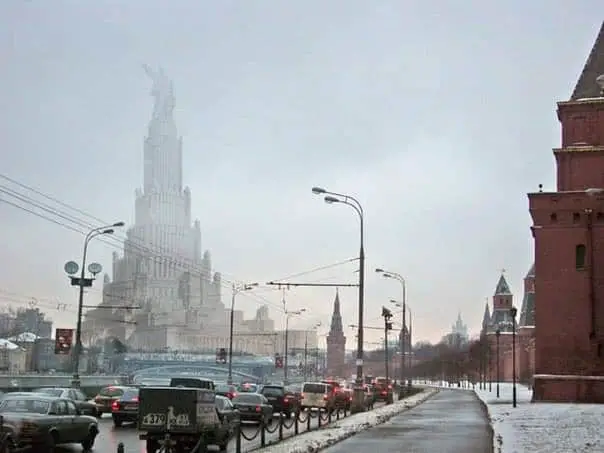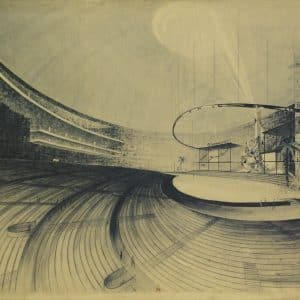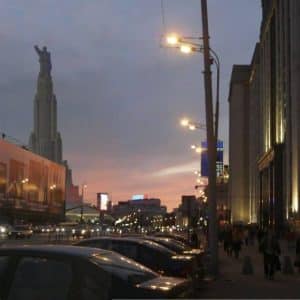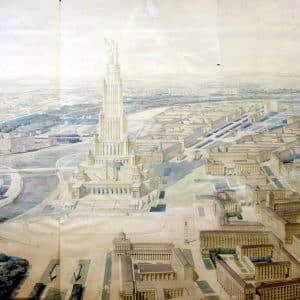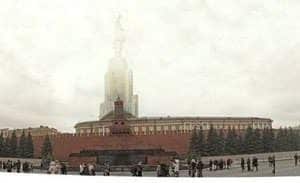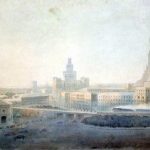In 1931, the Communists began drawing up plans to tear down Christ the Savior Cathedral and, in its place, build the Palace of the Soviets. It would have been the world’s tallest structure (and would still be #9 today). It would have been topped with 6000 ton statue of Lenin and included, among other things, a meeting hall for 21000 people (and a “little hall” for 6000).
In 1935, a Moscow subway station was completed to open on the future doorstep of the future mega-structure. The station was named The Palace of the Soviets in honor of the building.
The reinforced foundation for the new building was completed in 1939. By 1941, the steel frame for the lower levels was complete. In June of 1941, the Germans invaded the USSR in an escalation of WWII. Construction was halted as men and resources were diverted to the war effort. Much of the steel frame would be pulled down to make tank blockades as the Germans approached Moscow in December, 1941.
Construction on the Palace was never resumed and the foundation of the planned building was turned into an open-air swimming pool for several decades.
The Soviets didn’t officially give up on constructing the Palace until 1953, when Khrushchev formally cancelled the plans. The Palace of the Soviets Station within Moscow’s subway system didn’t change its name (to Kropotkinskaya) until 1957.
In 1990, the Soviets gave permission for Christ the Savior to be rebuilt by the Orthodox Church. Work on the reconstruction of the church was officially completed in 2000.
But what would have happened if WWII had not begun and the Palace had been completed? A Moscow artist has recently begun circulating these images of modern Moscow with the image of the building superimposed… it should be mentioned, though that these are likely not entirely accurate. The Soviets had a few other mega-structures planned for Moscow that never began due, in part, due to the cost of WWII and to the amount of reconstruction that had to take place after.
Also included here are a few pictures of how the building was imagined at the time, including a sketch of the main meeting hall.


